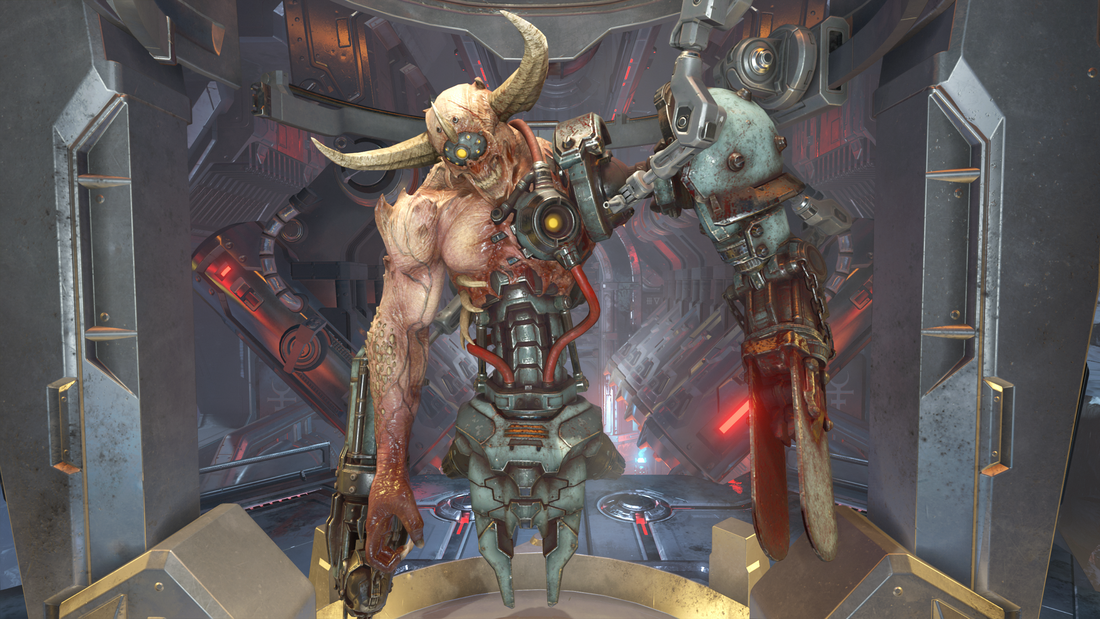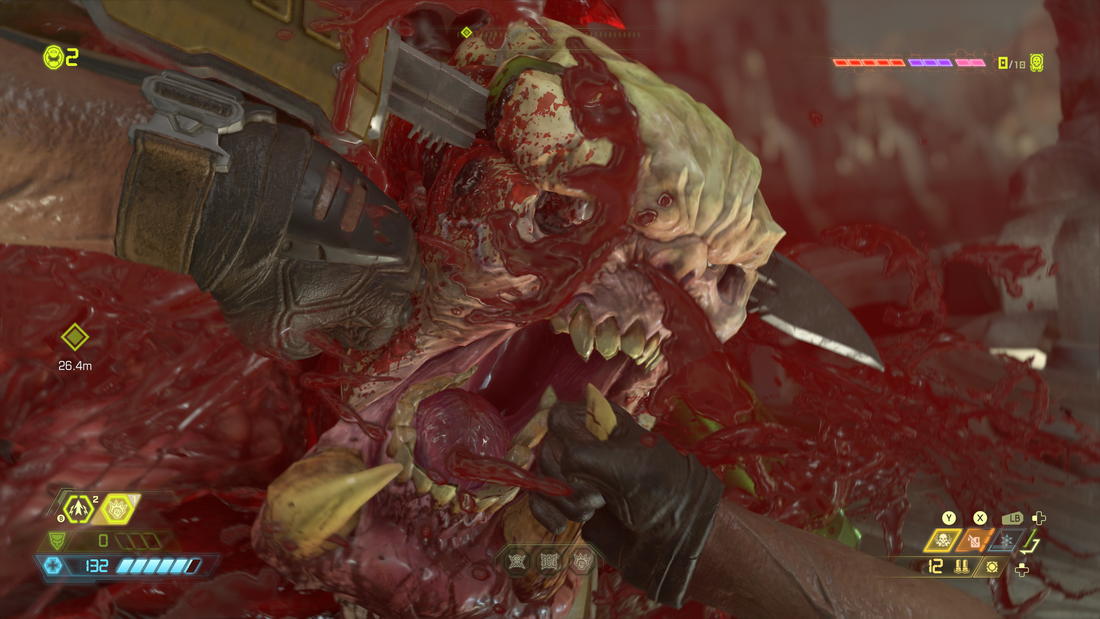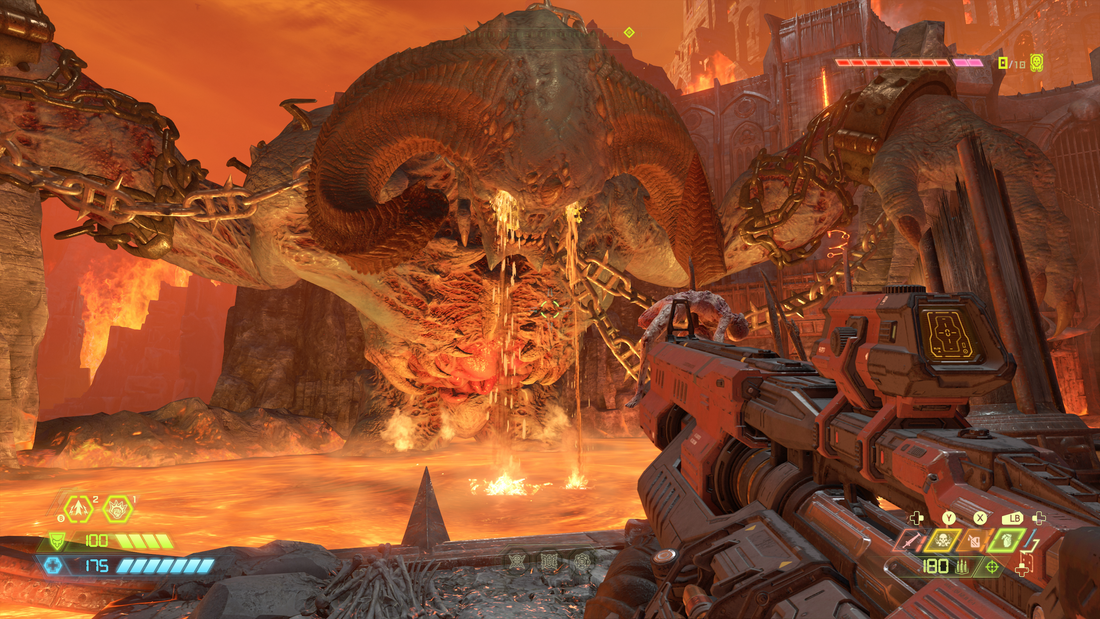
In 2009 there was Steins;Gate the video game. In 2011 the Steins;Gate anime was released. And then in 2018 the world was blessed with Steins;Gate Elite -- the video game... based on the anime. Seems like Steins;Gate was pretty successful! Elite was released for various systems, with the PlayStation 4, Steam, and Switch variants all arriving in North America in 2019 (sorry Vita owners).
Being an adaptation (of an adaptation), the plot here is mostly identical to the original. The protagonist is one Rintaro Okabe, a university student living in the Akihabara district of Tokyo. He also goes by Kyouma Hououin, a self-imposed "mad scientist" alter ego. Okabe is seemingly paranoid and delusional, frequently ranting about being on the run from the "Organization" that tracks such brilliant researchers. He's also prone to engaging in phone conversations with absolutely no one, and bursting into fits of maniacal laughter. Okabe's mad scientist obsession has resulted in him renting a space above a CRT shop, where he tinkers on gadgets with his pals Daru, an otaku hacker, and Mayuri, the adorable and caring childhood friend. One day Okabe and his pals decide to attend a "time travel conference" -- which Okabe soon ditches after deriding the presenter as a fraud. He quickly runs into a girl named Kurisu Makise, who he recognizes as a brilliant young scientist who typically resides in America and has published some critically important work. On his way out of the building, Okabe stumbles onto Kurisu once again, murdered at the end of a desolate hallway. When attempting to inform Daru via text, Okabe notices a sudden shift in his surroundings, as hundreds of pedestrians simply vanish. Even stranger, Kurisu turns up again soon enough -- alive. The members of the "Future Gadget Laboratory" (now featuring Kurisu) pinpoint the cause: a modified microwave they've created, one that was designed to heat food remotely via cellphone, has the power to send text messages into the past. Said messages can influence the behavior of "past" individuals, thus causing immediate modifications to the current worldline. Naturally, the ragtag team begins to experiment liberally, with Kurisu making use of her technical acumen to modify the device further. Such actions, of course, result in some seriously unforeseen consequences, and bring the group into contact with some unsavory folks looking to monopolize time traveling technology.

A visual novel is only as good as its writing. And the writing here is phenomenal. To start: the protagonist. Okabe, despite (and because of) all quirks, is probably the best male hero of any visual novel. He's kind, empathetic, and a dear friend to all close to him -- a far cry from the weirdo pervert trope seen in so many other VNs. The supporting cast is also extraordinarily memorable. The laboratory membership grows as the game progresses, each time graced with another distinctive personality. There's the hyperactive maid café employee extraordinaire Faris; the shy ever-texting Moeka; the androgynous shrine "maiden" Luka; the cyclist and CRT shop part-timer Suzuha. Finally, there are those that aren't affiliated with the lab: the crotchety rent-hiking CRT shop owner "Mr. Braun" and his young timid daughter. There's great cohesion among the "lab mems" and the constant banter is a sight to behold. The lab itself just feels so cozy and inviting. This is a strikingly funny game (at times) replete with plenty of corny net/hacker slang and tons of nerdy otaku jokes.
The time travel mechanics are explained thoroughly, and remain consistent throughout the game's duration. The science, real and imagined, is rather fascinating, and the game tries its best to leave few questions unanswered. There's a "tips" menu that can lead the player into more in-depth explanations about various scientific concepts -- it's also used to clarify the seemingly endless manga, anime, and video game references as well. Some critiques of Steins;Gate (original and Elite) state that it starts off too slowly. I disagree -- it establishes a firm foundation of "ground rules" and then the story rolls along unencumbered. The game deftly avoids the "deus ex machina" pitfalls seen in many time travel stories; and though there are no obvious plot holes some of the "big reveals" seen towards the game's end feel a touch contrived. Elite, like its forebear, is one of those games that refuses to let background characters remain background characters. As any visual novel veteran could predict, the game's tone darkens as it progresses. There are many unsettling scenes, and, like the great Muv-Luv Alternative, Steins;Gate knows how to impose a tremendous feeling of anxiety onto the player.

One unexpected and delightful aspect of the Steins;Gate Elite storyline is its willingness to blend fiction with not only science and technology, but also real-life mysteries and conspiracies. For instance: Okabe is ticked off at the game's opening lecturer, as he believes the man is plagiarising the works of John Titor. As in, the "real" John Titor, the man who made a splash on various message boards decades ago, claiming to be a time traveler from 2036. John Titor (both the "real" one and the in-game one) was searching for an IBM 5100 (renamed "IBN 5100" for the Steins;Gate universe though its likeness is identical), as it was said to contain crucial code necessary to avoid a technological calamity. And the villains of Steins;Gate Elite? CERN ("SERN") -- yes,
the CERN, the French research institute and particle physics laboratory, is explicitly labelled as corrupt and evil. They're in the midst of mastering their own time traveling methods to order to rule the past, present, and future. There are also some more obscure references for the gaming/web nerds thrown into the mix as well. For instance, for his "super hacking" Daru utilizes the power of the Sharp X68000, the 1987 twin-towered 16-bit gaming titan. As for the Future Gadget Laboratory website that Okabe occasionally updates: it actually exists, complete with Engrish descriptions of various inventions and a classic Geocities style layout.
As far as actual gameplay goes, Steins;Gate Elite isn't a pure visual novel, but more of cross between a visual novel and interactive movie. So, instead of displaying story text alongside static sprites, Elite displays text alongside a series of short video clips and anime stills. It works reasonably well, though A-button-mashing speed readers will experience rapid jump cuts as they begin to outpace the speed of the animation. The art is gorgeous, but it does look something like "typical" anime, as opposed to the original VN which showcases some very unusual (and delightful) "grainy" visuals. The voice acting is once again exemplary (I believe the cast is identical to that of the original game and anime), as is the synth-heavy soundtrack.

This all begs the question: if gameplay is minimal and composed of a bunch of anime clips plus the same ol' story, voice cast, and soundtrack... then what's the point of playing Elite when one could simply watch the Steins;Gate anime? The short answer: interactivity. While the anime featured a linear journey to the tale's best (and "true") ending, Elite allows the player to take those alternate pathways, to alternate endings that were seen in the original visual novel. New animation was developed for these routes, naturally. Navigation through the game is still based on the "phone trigger" system, where Okabe uses his cellphone to make and receive calls, and answer or ignore emails -- sometimes altering the flow of time itself. The system has been completely retooled this time around. In the original game, the player was left to pay attention to cues (such as a ringing or chiming phone), and then push a button to bring up the phone's display. Calls and emails could easily be disregarded unless the player consciously decided to interact. Such interaction was time-sensitive as well, as messages viewed too late lacked a response option. In Elite, the phone is always answered automatically, with its display filling the entire screen. Thus, messages cannot be received out-of-context, and the routes through the game become easier to parse. That said, achieving the true ending is still needlessly difficult, as it's dependent on an a seemingly arbitrary series of email exchanges between Okabe and Kurisu. Consult a walkthrough, seriously.
One perk of Steins;Gate Elite is the inclusion of a bonus game. Those who purchased it on the PlayStation 4 or Steam received Linear Bounded Phenogram, a decently meaty spin-off originally released in Japan in 2013. But here on the Switch, Elite owners instead get 8-Bit Adv Steins;Gate, a brief (no saves) tribute to the old Famicom detective stories. It's decent for what it is. Annoyingly, there doesn't seem to be a way to play both Linear Bounded Phenogram and 8-Bit Adv Steins;Gate without purchasing two copies of Elite.
In summation, Steins;Gate Elite is highly recommended. But I say this with a simple caveat: this isn't quite as good as the original, nor is it a "substitute" for that game. Play this after going through the original and viewing the anime. Too much Steins;Gate? I don't think so.











